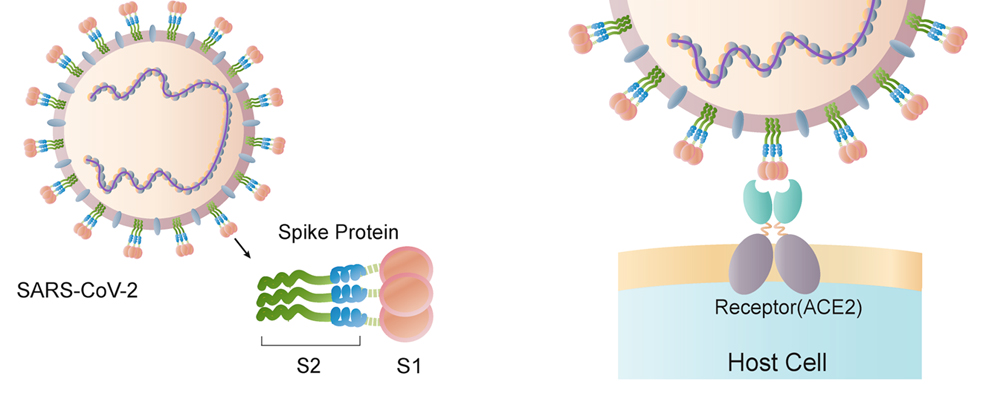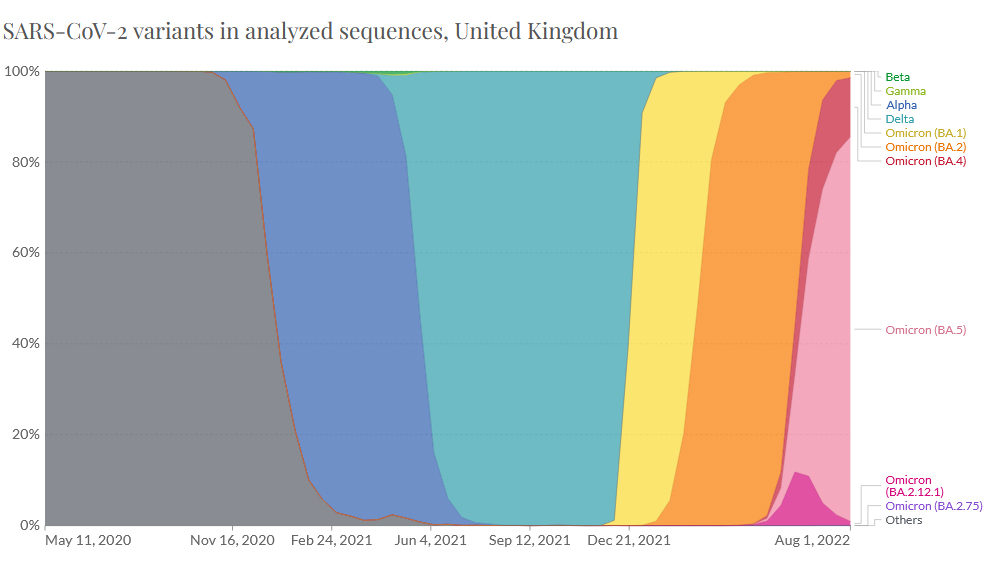
8th August 2022 Progress towards a pan-coronavirus vaccine Researchers at the Francis Crick Institute in London have shown that a specific area of the SARS-CoV-2 spike protein is a promising target for a pan-coronavirus vaccine that could offer protection against new variants, as well as common colds, and help prepare for future pandemics. Developing a vaccine against multiple coronaviruses is a challenge because this family of viruses have many key differences, frequently mutate, and generally induce incomplete protection against reinfection. This is why people can suffer repeatedly from common colds, and why it is possible to be infected multiple times with different variants of SARS-CoV-2. A pan-coronavirus vaccine would need to trigger antibodies that recognise and neutralise a range of coronaviruses – stopping the virus from entering host cells and replicating. A new study, published in Science Translational Medicine, investigated whether antibodies that target the S2 subunit of SARS-CoV-2's spike protein also neutralise other coronaviruses. This specific area of the spike protein, highlighted below, tethers it to the virus membrane and allows the virus to fuse with the membrane of a host cell.
"The S2 area of the spike protein is a promising target for a potential pan-coronavirus vaccine, because this area is much more similar across different coronaviruses than the S1 area," said Kevin Ng, co-first author and PhD student in the Retroviral Immunology Laboratory at the Crick Institute. "It is less subject to mutations, and so a vaccine targeted at this area should be more robust." The researchers found that after vaccinating mice with SARS-CoV-2 S2, the mice created antibodies that were able to neutralise a number of other animal and human coronaviruses – including the seasonal 'common cold' coronavirus HCoV-OC43, the original strain of SARS-CoV-2, the D614G mutant that dominated in the first wave, Alpha, Beta, Delta, the original Omicron and two bat coronaviruses. "The expectation for a vaccine that targets the S2 area is that it could offer some protection against all current, as well as future, coronaviruses. This differs from vaccines that target the more variable S1 area which, while effective against the matching variant they are designed against, are less able to target other variants or a broad range of coronaviruses," said George Kassiotis, corresponding author and principal group leader at the Crick. "There's a lot of research still to do as we continue to test S2 antibodies against different coronaviruses and look for the most appropriate route to design and test a potential vaccine." The S2 area of the spike protein has, until recently, been overlooked as providing a basis for vaccination. This is because certain critical targets in the S2 area are only revealed after the virus has bound to a cell, a process mediated by the S1 area. As a result, there may be a narrower window of opportunity for S2 antibodies to neutralise the virus than for antibodies that target the S1 area. The researchers at Crick will now continue their work studying the potential for targeting the S2 area of the spike protein and how this could be integrated with currently licenced vaccines. Prof Penny Ward, a visiting professor in pharmaceutical medicine at King's College London, who was not involved in the study, said a universal coronavirus vaccine "could solve the problem of endless new waves of disease caused by variants with reduced vaccine sensitivity".
Credit: OurWorldInData (CC BY 4.0)
Comments »
If you enjoyed this article, please consider sharing it:
|








